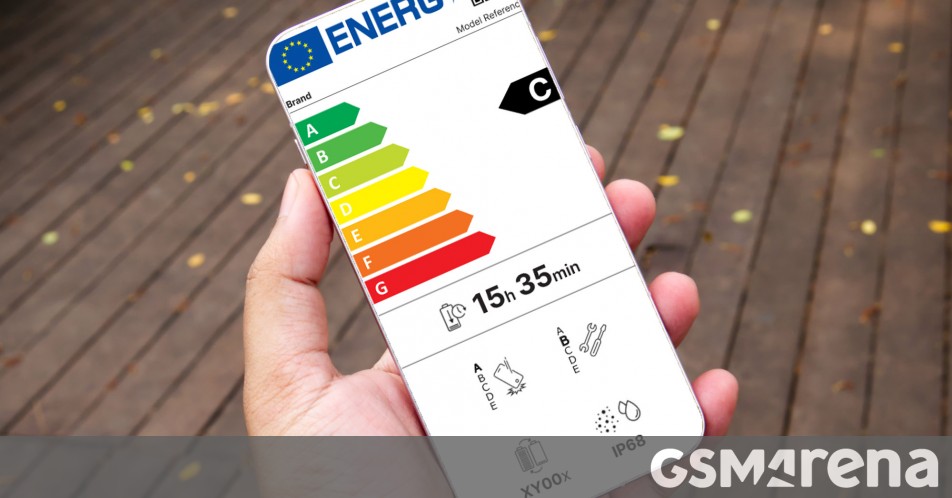Know before you buy: starting today, EU’s new labels shake up the smartphone market
Starting today, all new smartphones and tablets sold in the EU are required to provide an energy efficiency label inside their packaging. The in-box sticker is similar to the ones shown on other consumer electronic devices sold in the EU/EEA market. The new regulation’s main goal is to help EU consumers make informed buying choices and help reduce CO₂ emissions.

The regulation applies to all cordless phones (landlines), smartphones used on cellular or satellite networks, feature phones without internet connection or third-party apps, and tablets with screens between 7 and 17.4 inches.
The ENERGY sticker, as it is commonly known, features a rating on a scale from A to G, with A being the most efficient and G the least efficient. It displays seven pieces of information:
- The overall energy efficiency class rating (from A to G).
- Battery endurance per cycle (in hours and minutes) per full battery charge
- Repeated free fall reliability class (from A to E).
- Battery endurance in cycles.
- Repairability class (from A to E).
- Ingress protection rating.

Manufacturers will need to register their products with the European Product Registry for Energy Labelling (EPREL) which is managed by the European Commission.
In addition, all new devices sold in the EU will have to meet five eco-design criteria:
- Durability: Devices should be resistant to accidental drops and protected against dust and water.
- Battery longevity: Batteries must endure at least 800 full charge and discharge cycles while retaining at least 80% of their original capacity.
- Repairability: Manufacturers must make critical spare parts available within 5 to 10 working days, and continue offering them for 7 years after the product is no longer sold in the EU.
- Software support: Devices must receive operating system upgrades for at least 5 years from the end-of-sale date.
- Repair access: Professional repairers must have non-discriminatory access to any required software or firmware.
Devices launched before June 20 are exempt from the new labels, and they also do not apply to devices with rollable displays, smartphones designed for high-security communications and tablet computers with full-featured operating systems.
We’d like to point out that the new battery endurance rating aspect is actually closely tied to our very own battery life test and uses software from French automation company SmartViser, which now offers the same testing solutions to device manufacturers.
Source
